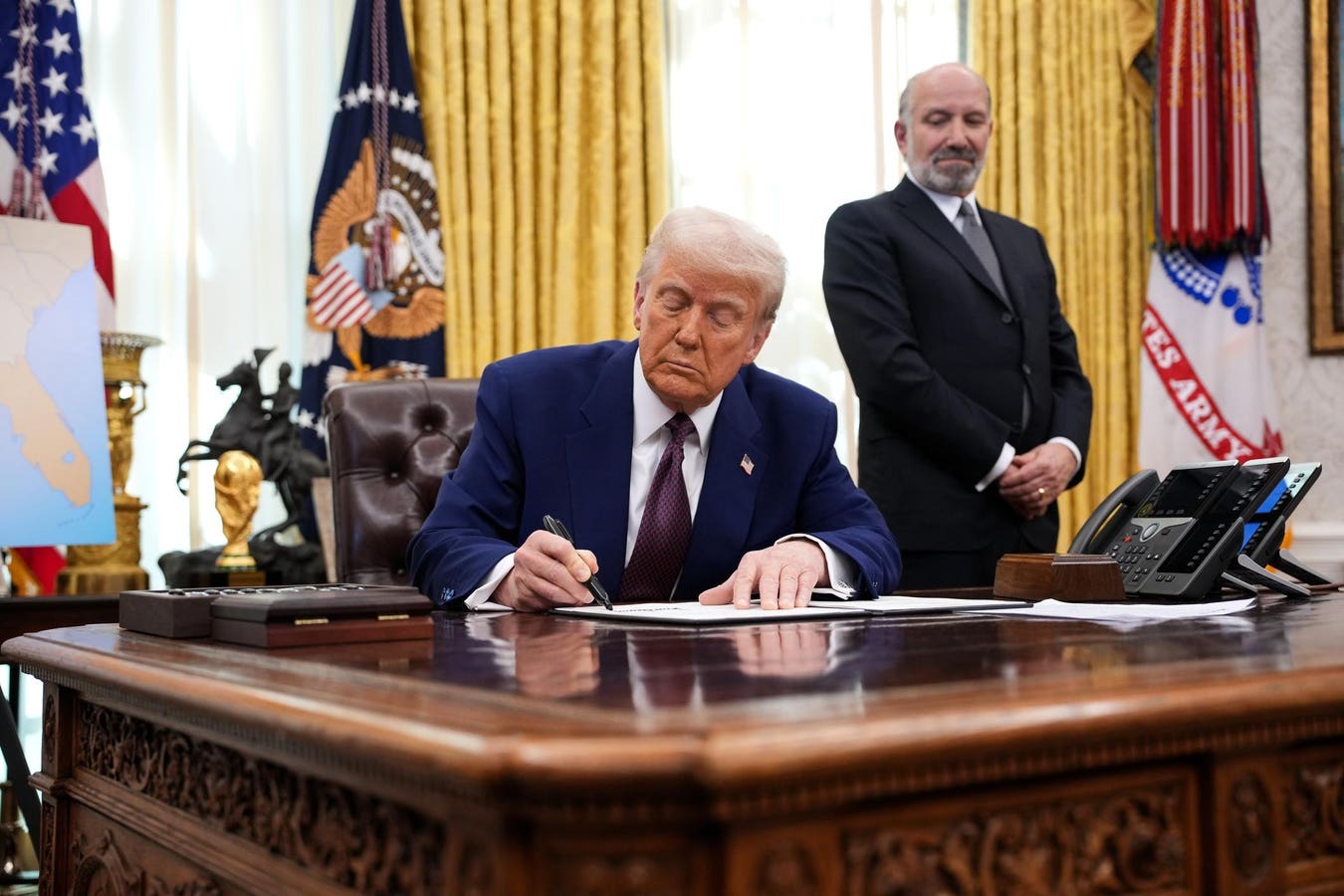Money
Winners And Losers In Trump’s Reciprocal Tariff Strategy

The Evolution of Trump’s Tariff Strategy: From Universal to Reciprocal Tariffs
President Donald Trump’s approach to tariffs has undergone a significant transformation, shifting from a universal tariff strategy to a more nuanced reciprocal tariff model. Initially, the administration considered applying a uniform tariff rate to all imports, which would have imposed a flat tax on goods entering the U.S., regardless of their origin. However, this approach was abandoned in favor of a more targeted strategy. Reciprocal tariffs involve matching the import duties levied by other countries on U.S. goods. For example, if a foreign country taxes American-made cars at a 10% rate, the U.S. would impose the same 10% tariff on cars imported from that country. This shift is seen as a more balanced and fair approach to international trade, with potential benefits for U.S. consumers, investors, and trading partners. However, as with any major change in trade policy, there will be winners and losers, and the complexity of implementation poses significant challenges.
The White House Plan: A Holistic Approach to Trade
On February 13, the White House released a memorandum outlining the administration’s new tariff strategy. The plan goes beyond simple tariff matching, instructing officials to consider a wide range of factors, including value-added taxes (VATs), non-tariff barriers, regulatory requirements, subsidies, and exchange rate policies. Trump has directed his team to assess any practice that unfairly limits market access or creates structural impediments to fair competition with the U.S. market. This comprehensive approach means that each trading relationship will be evaluated in its entirety, with the goal of creating a more level playing field. The administration has given officials 180 days to gather the necessary information, signaling a methodical and deliberate process.
Universal Tariffs vs. Reciprocal Tariffs: Impact on Consumers and Businesses
The shift from universal to reciprocal tariffs is expected to have a smaller impact on U.S. consumers. Under a universal tariff system, all imports would have been taxed at the same punitive rate, likely leading to higher prices for a wide range of goods. Reciprocal tariffs, on the other hand, are tailored to match the tariffs imposed by other countries, resulting in lower rates for many products. Importers have several options when dealing with tariffs: they can absorb the cost, pass it on to consumers, or switch to suppliers in countries with lower or no tariffs. Companies may also adopt a hybrid approach, absorbing some costs and passing the rest on to consumers. Overall, reciprocal tariffs are seen as a more consumer-friendly option, especially compared to the proposed 10%-20% universal tariff rate.
Controlling Inflation and Achieving Broader Economic Goals
One of the key reasons for the shift away from universal tariffs is the administration’s focus on controlling inflation. Recent data shows that the downward trend in the Consumer Price Index (CPI) has stalled, raising concerns about potential price increases. The Federal Reserve’s decision to hold off on further interest rate cuts has also highlighted the need for cautious economic policies. Implementing universal tariffs would likely lead to higher consumer prices, contradicting the administration’s broader goal of keeping inflation in check. Additionally, the administration has expressed a preference for lower long-term government bond yields, which could be jeopardized by inflationary pressures resulting from across-the-board tariffs.
Tariffs as a Tool for Negotiation and Tax Policy
The Trump administration has effectively used the threat of tariffs as a negotiating tactic to achieve its goals. For instance, the threat of a 25% tariff on Canada and Mexico, the U.S.’s two largest trading partners, led to swift action to address demands for enhanced border security. Tariffs have also been framed as a tool for tax policy, providing an additional source of revenue to help address the U.S. budget deficits. Trump has long viewed trade deficits as unfair and has sought to tax countries that export more to the U.S. than they import. By making trade more reciprocal and balanced, the administration aims to reduce the trade deficit, grow the U.S. economy, and improve trade relationships to the benefit of American workers, manufacturers, farmers, and businesses.
The Implementation Challenges of Reciprocal Tariffs
While the idea of reciprocal tariffs is straightforward, the implementation is far more complex. The U.S. Harmonized Tariff Schedule includes approximately 13,000 product categories, and the U.S. trades with nearly 200 countries. Matching tariffs for each product and country could result in over 2.6 million unique tariff rates, creating a significant administrative burden. Additionally, reciprocal tariffs require ongoing monitoring to prevent countries from circumventing the system. For example, a country facing U.S. tariffs might adjust its supply chain by completing most of its production domestically and then shipping the nearly finished product to a tariff-free country for final assembly before exporting it to the U.S. Vietnam has reportedly served as a connector country for China, helping it avoid U.S. tariffs. As a result, Vietnam’s exports to the U.S. have nearly doubled in the past five years.
Which Countries Are Most Vulnerable to Reciprocal Tariffs?
Certain countries are particularly vulnerable to the new reciprocal tariff strategy. India, for instance, has a high average tariff rate of 9.5% on U.S. goods, compared to the 3% tariff the U.S. imposes on Indian goods. Sectors in India that are likely to be affected include textiles, pharmaceuticals, gems and jewelry, autos, iron and steel, and chemicals. With a $45 billion trade surplus with the U.S., India is especially vulnerable to tariff adjustments. The European Union is another key target, with an average tariff rate of 5%, compared to the U.S.’s 3.4%. The gap is even wider in certain categories, such as autos, where the EU imposes a 10% tariff on cars compared to the U.S.’s 2.5% rate on European vehicles. The EU also has non-tariff barriers, such as VATs and regulatory standards, which Trump has criticized as unfair. Pharmaceuticals, medical devices, and automobiles are expected to face significant tariff hikes.
The Legality of Reciprocal Tariffs: A WTO Perspective
The legality of Trump’s reciprocal tariff policy has been questioned, as it directly contradicts World Trade Organization (WTO) rules. The WTO requires member countries to apply the same tariff rates to all other members without discrimination. Trump’s plan would impose different tariffs on various countries based on their tariff levels and trade practices, violating this principle. However, the U.S. has been critical of the WTO, particularly its policy allowing countries to self-designate as developing nations to receive special treatment. This designation has enabled emerging economies like China to benefit from provisions meant for truly developing nations, potentially putting the U.S. at a disadvantage in trade negotiations. The U.S. has also accused China of violating WTO principles by subsidizing state-owned enterprises, dumping products, and stealing intellectual property. The language in the reciprocal tariffs memorandum is designed to address these issues.
Initial Reactions to Reciprocal Tariffs: Markets and Economists Weigh In
The initial reaction to the shift from universal to reciprocal tariffs has been mixed. Goldman Sachs estimates that a narrow reciprocal plan focusing only on tariff differentials could raise the U.S. effective tariff rate by 1% to 2%. However, a broader strategy that includes VATs and other non-tariff barriers could increase the effective tariff rate by more than 10%. Despite these projections, financial markets have generally favored the shift, as the new policy is seen as less disruptive than the initial universal tariff proposal. A UBS index tracking stocks labeled as “EU Tariff Losers” has risen 4.2% in the past week, reaching its highest level since Trump’s election. While most economists agree that any increase in tariffs could lead to inflation and disruption in global trade, markets are relieved that the new policy will take time to implement and will use a more targeted approach. There is also a possibility that U.S. trading partners with high current tariffs will lower their tax rates to protect their export markets. Overall, while reciprocal tariffs are imperfect, they are seen as a better outcome for the global economy than the initial universal tariff proposal.


















